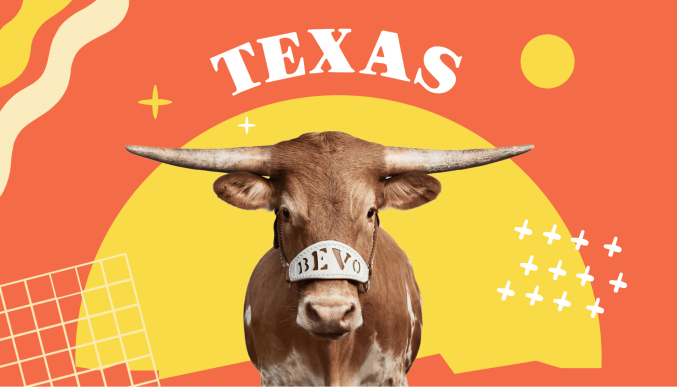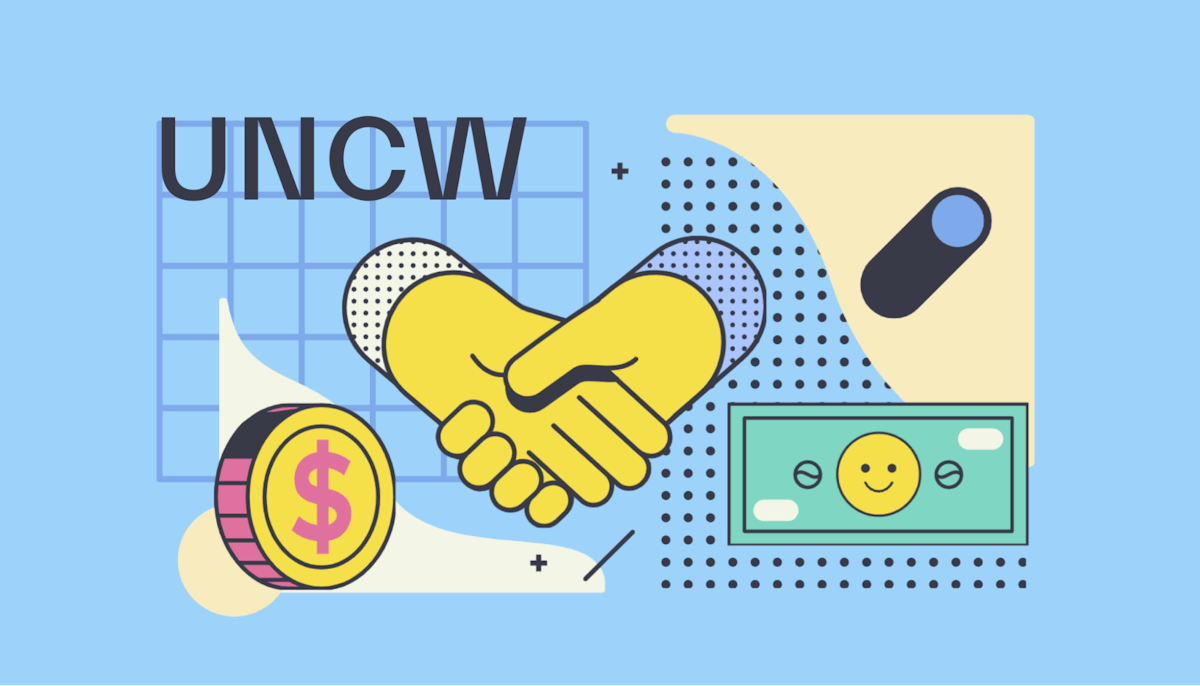Financial aid •
New York University financial aid: a complete guide
Read all about financial aid at New York University, including scholarships, loans, and grants.
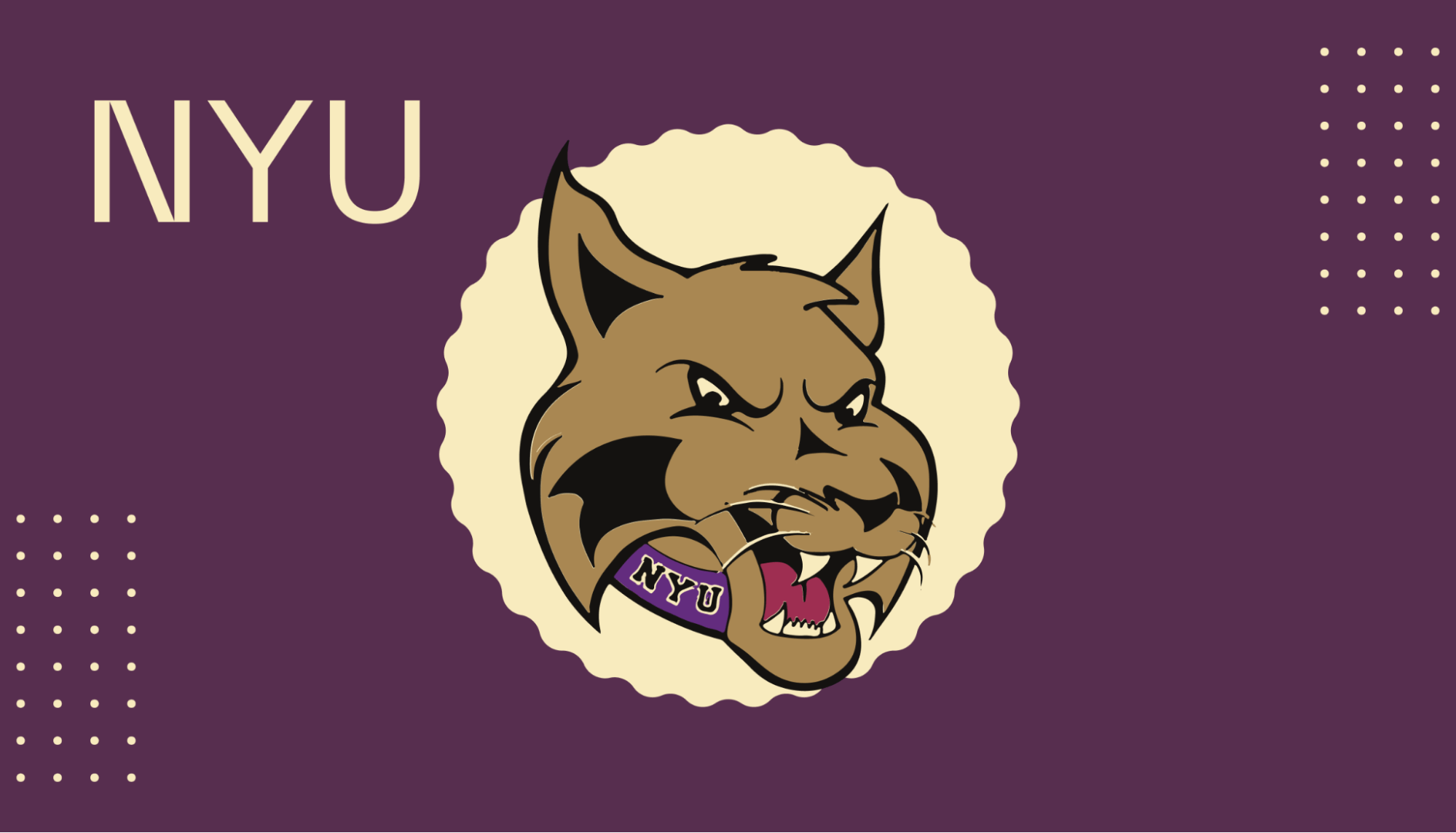
Founded in 1831, New York University has grown from its initial enrollment of 158 to have more than 50,000 students at its 5 campuses, including the main campus in Manhattan and its locations in Africa, Asia, Europe, and South America.
NYU’s founders believed that cities are engines of creativity, so it leverages its locations in major world cities to provide students with unique educational experiences. Its mission is to be a top center of scholarship, teaching, and research internationally.
If you’re considering attending NYU but need a hand paying for college, we’ll break it all down.

A snapshot look at New York University
Located in the heart of New York City, NYU is an exciting university that focuses on research. The student body is diverse, with students from almost every state and more than 130 countries.
NYU includes 18 schools and colleges for its 53,576 students. Students can choose from one of the more than 400 academic programs offered by the institution, meaning there’s something for almost everyone at NYU. There’s also a host of online programs for students who want to continue learning over the summer or who can’t commit to studying on campus.
Outside of classes, students have easy access to New York City, one of the largest and most diverse cities in the United States. Students can enjoy the city’s many sights and attractions, join one of NYU’s hundreds of student organizations, or participate in or cheer on the school’s NCAA sports teams.
Ranking: 28th in National Universities
Size: 53,576 students
Demographics: 42% males, 58% female
Tuition: $58,168
Acceptance rate: 21%
Average GPA of accepted student: 3.7
Key dates and deadlines (2021):
Application: January 5th
Financial aid deadlines: February 20th
A look at scholarships offered by New York University
A college degree is one of the most expensive things that you’ll ever pay for. It’s easy to spend tens or hundreds of thousands of dollars on college costs. There aren’t many people who can pay that out of pocket, so you’ll probably need some help.
One of the best ways to get extra funds to pay for college is to apply for scholarships. Scholarships give you money that you can put toward tuition, fees, and other college expenses. Best of all, there’s no expectation that you pay them back.
There are lots of ways to get scholarship money. You can receive need-based financial aid or win scholarships based on your scholastic or athletic excellence.
NYU offers a few different scholarship programs for its students.
For example, the September 11th Scholarships offer aid to the dependents and spouses of firefighters, police officers, and emergency workers who died during the September 11th attacks.
There are also more generic programs available to students from other backgrounds. NYU’s financial aid website has more information available.
Even if you don’t receive a scholarship from NYU, don’t lose hope. There are scholarships available from other sources. Many businesses, community organizations, and other groups have their own scholarship programs.
If you look carefully, you can find scholarships for almost everything you can think of! Taking just a few minutes to fill out scholarship applications can be worth hundreds or thousands of dollars toward your education.
Mos’s guide to financial aid tips and tricks is one of the best places to check if you’re looking for strategies on how to receive the most financial aid.
Student loans
Though scholarships are, by far, the best way to pay for your degree, it’s hard to earn a full ride. If your family’s savings aren’t enough to make up the difference, you’ll want to turn to student loans.
Student loans are special loans designed specifically to help students pay tuition, fees, and living expenses while they work on their degrees. The drawback of using a student loan is that you’ll have to pay the money back, plus interest.
However, for many people, the cost of borrowing money is worth it to invest in themselves and their education.
NYU’s financial aid website has some information about the different types of loan programs that are available to its students.
For the majority of students, the best loan program available is the Federal Direct Loan Program. These loans, like their names imply, come directly from the US federal government.
There are 2 types of federal loans. Subsidized loans don't accrue interest until after you leave school. That means they’re less expensive than unsubsidized loans, where interest starts to build up right away.
Federal student loans also have other benefits on top of interest subsidization.
For example, students can sign up for income-based repayment plans to make their monthly loan bills more affordable. There are also loan forgiveness options that can help you eliminate a large portion of your debt, making it easier to afford the cost of college.
If federal loans aren't enough to cover your remaining college costs, you can also work with private student lenders. These are banks, credit unions, and other companies that offer loans to students.
However, it’s usually a good idea to maximize your federal loans before turning to a private loan. Private loans have higher interest rates and fees. They also lack perks like income-based repayment and loan forgiveness.
Figuring out all the different student loan options, and choosing the right one for you, is hard. Our article about the different types of financial aid you need to pay back can help put you on the right track.

FAFSA
Completing the Free Application for Federal Student Aid (FAFSA) is one of the most important things any student can do if they need help paying for college.
The FAFSA is a universal student aid application that is used by federal and state governments and individual schools to make decisions about how much aid they should provide. Filling out one form can make you eligible for dozens or even hundreds of different aid programs.
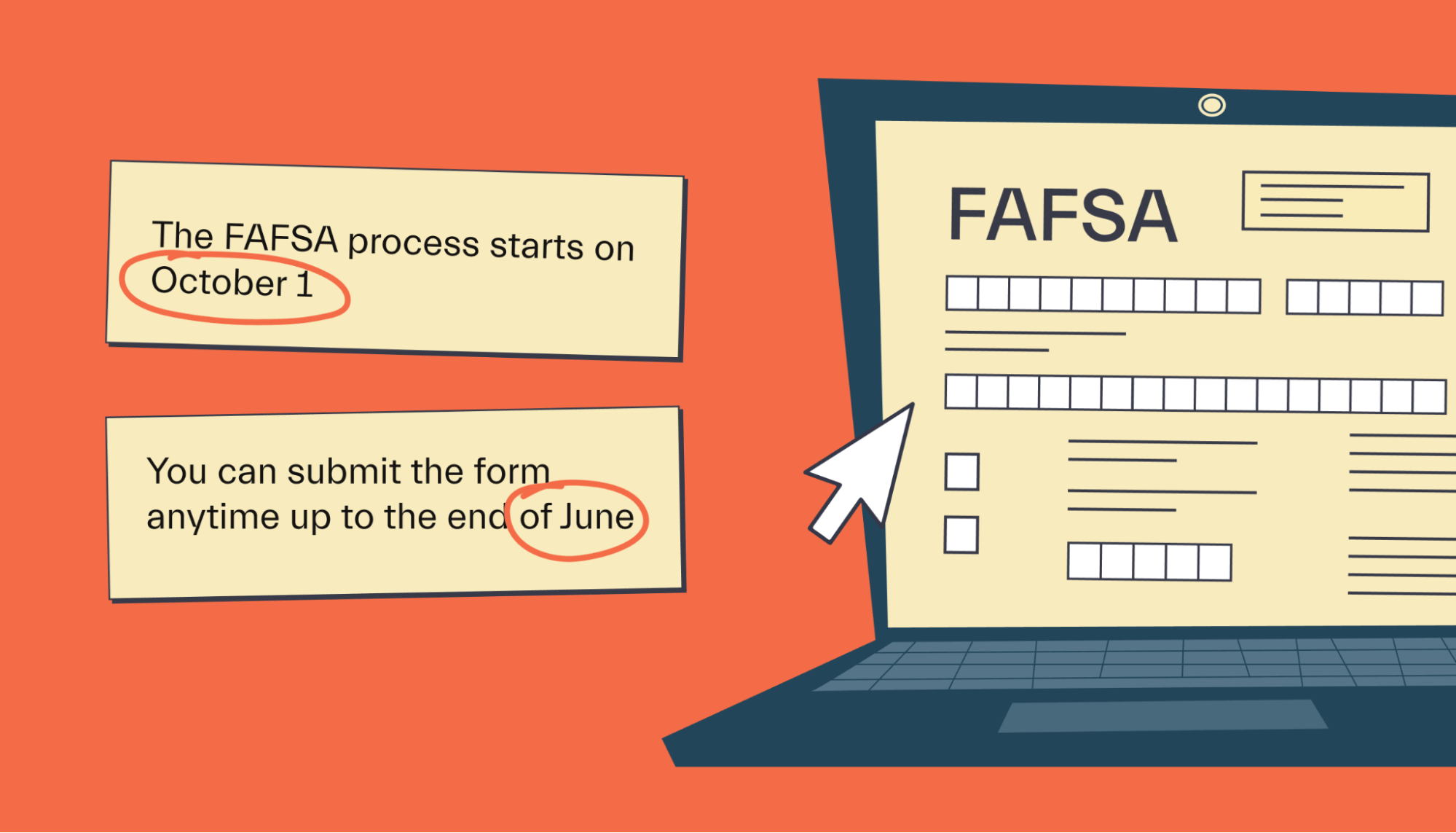
To fill out the FAFSA, you’ll need to sit down with your parents or guardians and answer some questions about your financial situation. Be ready to enter things like your annual income and the amount you’ve saved to pay for college.
Based on your answers, the FAFSA will calculate your expected family contribution (EFC) to the cost of your education. Any costs above that amount are considered your financial need.
You may be eligible for subsidized loans and federal grants, like Pell Grants, as well as other aid based on your financial need. Many schools also look at students’ needs when awarding aid, but keep in mind that most schools don’t guarantee that they meet all of their students’ financial needs.
Ultimately, that means that you’ll need to make up the remaining costs somehow, often through student loans. There are also work-study programs that you can find, or you can try a part-time job to help pay for some of your education.
If you’re ready to start filling out the FAFSA, be sure to set aside a good chunk of time. For more info, check out our article on how long it takes to complete the FAFSA.
New York University financial aid FAQs
Here are some frequently asked questions about New York University.
What is New York University’s cost of attendance?
The cost of attendance at New York University is $64,481 for a commuting student and $83,250 for an on-campus student. Of these amounts, $58,168 is tuition.
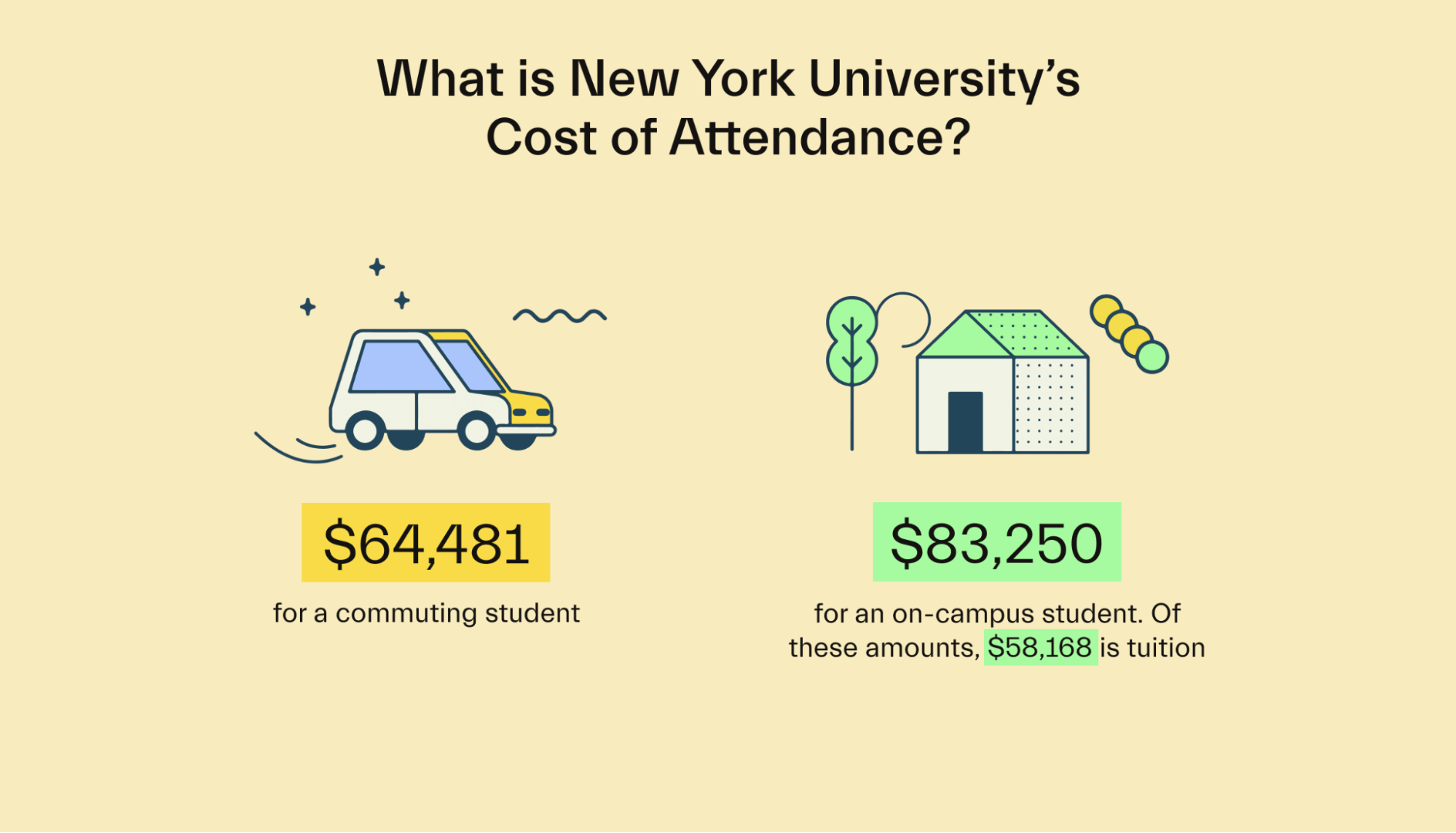
How many students pay no tuition at New York University?
New York University doesn’t publish the number of students that receive a full ride at the school. However, 24% of its students received Pell Grants, and the average scholarship awarded to first-year students exceeded $37,000.
Can out-of-state students receive financial aid?
Yes, NYU students from outside New York can receive financial aid to help pay for college.
Universities like New York University that you might be interested in
If you’re not sure that New York University is right for you, consider the alternatives.
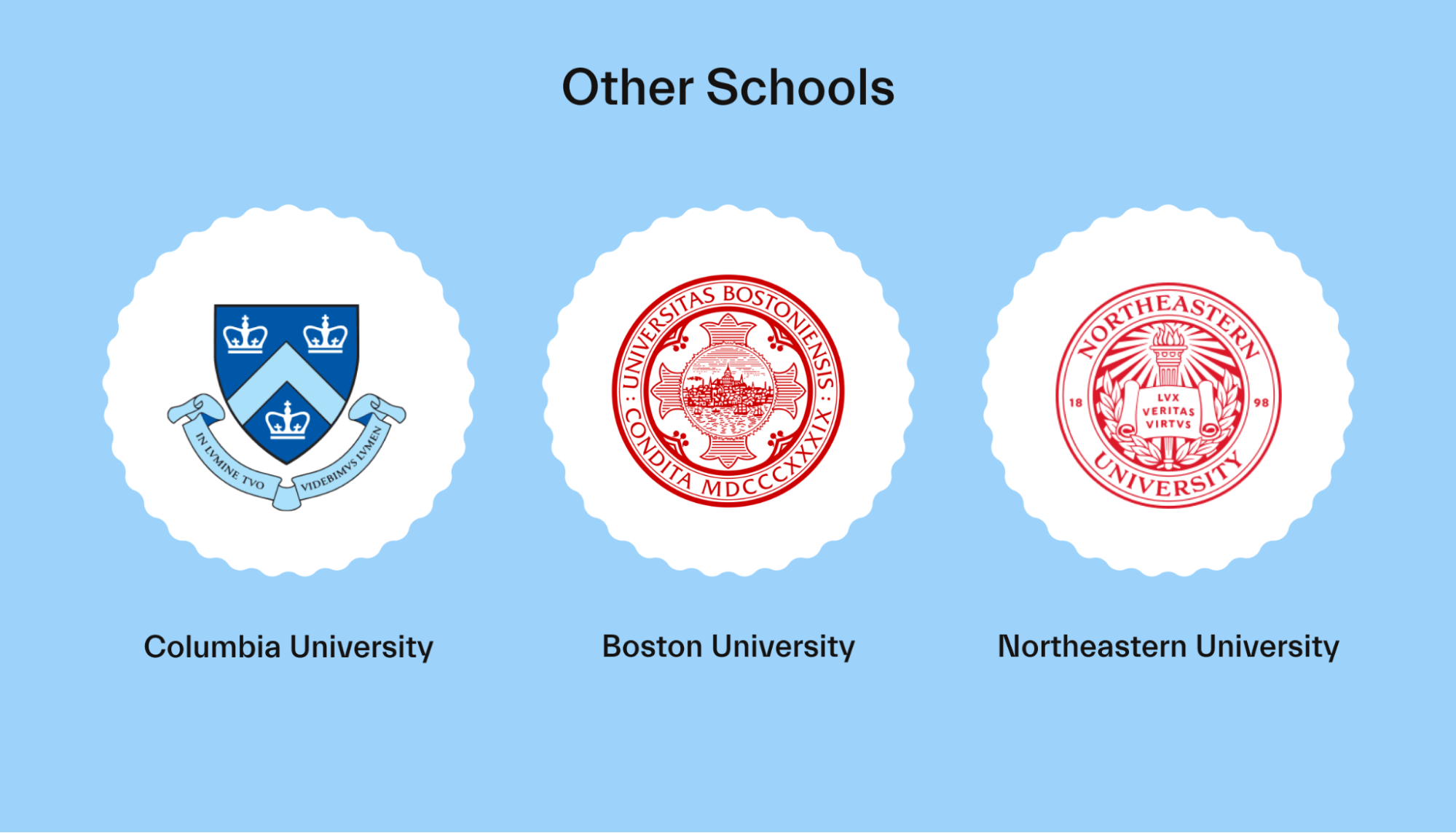
Columbia University
Columbia University, like NYU, is located in the heart of New York City. It is one of the world’s top research universities and leverages its location within the city to attract a diverse and accomplished faculty and student body.
Students at Columbia can take advantage of its location to experience the many attractions of New York City. While studying, they can choose from the university’s 3 undergraduate schools and 13 graduate schools while pursuing one of the university’s hundreds of courses of study.
Research plays a major role at the university, with the school receiving more than $1 billion in funding annually and claiming 84 Nobel laureates among its alumni, faculty, and researchers.
Outside of classes, students can join one of the school’s many arts, athletics, or community organizations.
Boston University
For students who want to experience a different world-class city, Boston University is a strong choice.
BU is home to more than 33,500 students and 10,000 faculty and staff. It is one of the top research institutions in the world and offers more than 300 programs of study for its students to choose from.
With its main campus located on Commonwealth Avenue, students are a short walk from the Fenway neighborhood of Boston and have easy public transit access to downtown as well as the neighboring cities of Somerville and Cambridge, giving them access to a vibrant and diverse area.
BU is also known for its athletics programs, particularly hockey, which students can cheer on during NCAA Division I matches against other Boston-area schools. Less athletically-inclined students can choose to join one of the university’s more than 400 clubs and student organizations.
Northeastern University
Northeastern University is another school located in Boston for students who want an urban school that’s located somewhere other than New York City.
Northeastern has made a name for itself with its recent rise in the US News ranks, now finding itself listed at 49th nationally. The school’s main campus is located in the heart of Boston, with easy access to the Orange and Green lines of the MBTA, giving students an easy way to reach other parts of the city as well as neighboring areas like Cambridge.
What sets Northeastern apart from many other universities is its innovative co-op program. Students on a 4-year degree plan will take 2 opportunities to leave their classes for 6 months and work full-time in their industry. Northeastern has more than 2,900 business partners locally and across the globe to provide these experiential learning opportunities to students.
Students can also study at one of the school’s global campuses, which includes locations in Portland, Vancouver, Toronto, London, Seattle, and Silicon Valley.
Outside of classes, students can cheer on the school’s Division I hockey team, which competes with other Boston-area schools or join one of nearly 400 student organizations, such as the chess club, ballroom dance club, or esports clubs.
Conclusion
NYU is a large school with a diverse student body and more than a dozen study sites across the world. If you’re looking for an exciting place to learn more about the world and other people, as well as the opportunity to travel to and study in some of the world’s top cities, NYU might be the right choice for you. However, keep in mind that its cost of attendance can be quite high, so you’ll need significant financial aid, or loans, to afford an NYU education. Need help with all this financial aid stuff?
Connect with a Mos advisor today to find every dollar you qualify for. From scholarships to grants to loans, we’ll fight to lower your tuition. When you join, you’ll also earn extra cash with Mos’s cash back debit card, referral bonuses, and gigs.
Let's get
your money
- Get paired with a financial aid expert
- Get more money for school
- Get more time to do you



